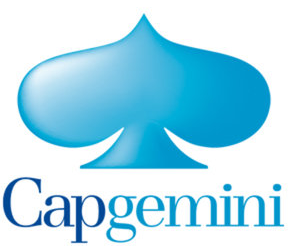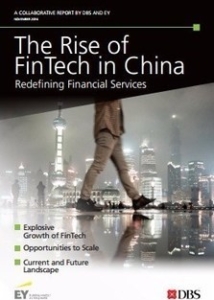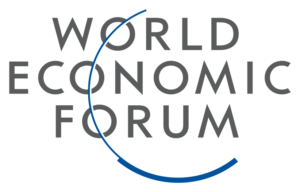Payments Industry Research & Resources
 Welcome to the Research and Resources page for the payments industry. We’ve gathered and curated the best payments research, references, resources and information available on topics of importance to the payments industry around the globe.
Welcome to the Research and Resources page for the payments industry. We’ve gathered and curated the best payments research, references, resources and information available on topics of importance to the payments industry around the globe.
Each are credible, free, third-party payments industry research and resources selected by our analysts and provided for quick reference in categories including: chargebacks, credit card fraud, international payments technology, mobile payments, online payments technology, outbound payments, e-commerce, retail and more.
The archive will be regularly updated and suggestions for additional payments industry resources are welcome. Just connect on our Contact Us page with your suggestion.
Payments Industry Trends
Switch on the right payment methods (Nov 2021)
A wave of Alternative Payment Methods (APMs) are gaining popularity with customers around the world, as 60% of ecommerce consumers say they would abandon their cart if they cannot pay with their preferred payment method. Learn how forward-thinking merchants are leveraging new APMs to lower transaction costs, improve conversion and acceptance rates and strengthen security.
The future payments in the Middle East (McKinsey & Co, Aug 2021)
The payments landscape in the Middle East is heading for an inflection point. Despite the region’s digitally savvy population—with smartphone penetration reaching 80 to 90% in leading markets – the region has remained heavily dependent on cash. Only about a third of retail transactions are conducted electronically, thanks to factors such as underdeveloped digital-payments infrastructure and services, underbanked consumer and merchant segments, and a cultural bias toward cash. However, new government and regulatory initiatives, coupled with the entry of new local, regional, and global payment providers, are bringing rapid change.
Buy now, pay later statistics and user habits (C+R Research, July 2021)
When it comes to financing options, consumers now have alternatives to credit cards in the form of “Buy Now, Pay Later” services. These services such as Affirm, Afterpay, Klarna and PayPal Credit allow consumers to make interest-free installment payments on a purchase over the course of several weeks. According to respondents, 60% say they have used a Buy Now, Pay Later service. Of those, nearly half (46%) are currently making a payment or payments through one of those services.
Marqeta: State of credit report 2021 (June 2021)
Marqeta surveyed 3,500 people in July, using Propeller Research to reach people in the United States, United Kingdom and Australia. We wanted to see against the backdrop of all of this talk of change, how far the needle had really moved in the market. We’ve pulled this insight together into our 2021 State of Credit report, to show where people are experimenting with new tools, where they’re staying with what’s tried and true, and how the last 18 months has shifted their consumer reality.
The 2021 mobile wallets report from Boku (June 2021)
There are 2.8 billion people using mobile wallets today, and that’s projected to grow to 4.8 billion by 2025. The 2021 Mobile Wallets Report features data from 19 countries across Asia Pacific, Latin America, Eastern Europe, Africa and the Middle East. 54 mobile wallets had over $1 billion in transactions in 2020. This report will help you understand which mobile wallets are most important for your mobile payments acceptance strategy.
How consumers pay bills: Expectations vs. reality (PayNearMe, April 2021)
PayNearMe conducted an online survey in April 2021 to determine perceptions and preferences for how US consumers want to pay their bills. Managing and paying bills is hard. It’s thought to be so annoying that 38% of adults would rather fold and put away laundry than pay their bills, and nearly 1 in 3 adults (29%) say that paying bills causes them stress and anxiety.
2021 Outlook: Payments, processing and IT services (RBC Capital Markets, April 2021)
The pandemic not only propelled a massive shift to online shopping and e-commerce, it also set the stage for disruption in the payments and processing ecosystem. “Buy now, pay later” (BNPL) consumers demanding faster, simpler, and more secure payment methods are transforming online point-of-sale (POS) systems. And, as many consumers switch to “super” apps to manage their finances and investments, tech companies are looking to make a bigger push into the banking arena through mergers and acquisitions, or competitive offerings.
US SMB Covid 19 Perspectives (The Strawhecker Group and Electronic Transactions Association, March 2021)
A new report reflects the impact of the pandemic on payments and the plans for US small businesses to respond to the new consumer payment preferences evolving. The report helps the payments industry understand how to best support the SMB community as they continue to manage the pandemic, while moving towards a goal of greater recovery. 18% of SMBs reported experiencing more attempted fraudulent payments in 2021, compared to 19% in 2020. 15% of SMBs added an eCommerce store since the pandemic started.
Financial impact of COVID-19 on SMB (Intuit/QuickBooks, March 2021)
Intuit QuickBooks commissioned economist Susan Woodward to uncover how COVID 19 has affected the finances of small businesses throughout the US. Woodward’s analysis uses net bank deposits — in other words, how much money is going into business bank accounts (excluding loans and government support) — to create the most complete estimate available of the pandemic’s impact on small business revenue. The businesses represented in this report are from every major sector and industry. Typically they have 10 employees or fewer.
The global payments report (FIS Global/Worldpay, March 2021)
As businesses began to reopen and we learned how to navigate the world amidst the pandemic, it became clear that rebuilding economies was essential. Doing it the right way will allow for smarter experiences and smarter interactions. We’ll explore how 2020 catapulted payments years ahead of where they were projected to be and we’ll dive into what commerce will look like post pandemic. Beyond just payments, we’ll highlight the newest modern currency and considerations for entering different markets.
How have payments changed in the past 10 months? (PaymentsNEXT, Feb 2021)
We’ve got a roundup of expert perspectives on how payments changed in 2020 and what’s on the horizon for e-commerce and brick-and-mortar merchants. These insights will guide you through the choppy waters ahead and how you need to respond to the latest consumer shopping habits, and how you provide payment choices for your customers. I don’t know anybody whose shopping habits haven’t changed. Here’s a snapshot of what researchers say is important.
Black Boxes and Paradoxes: The real cost of disconnected payments (Checkout.com, Feb 2021)
We delve into the true cost of false declines to merchants and the digital economy, what customers are willing to pay for better payments and how fast-growing brands approach payments. False declines cost merchants $20.3 billion last year, with $12.7 billion of that given away to competitors and $7.6 billion simply lost. 60% of merchants don’t think that their payments data adds value to business strategy or innovation. Super high growth (41%+ year on year) companies are more likely to have an authorization rate of 96-100% than other businesses.
The era of buy now pay later (Capco, Nov 2020)
Buy now pay later (BNPL) is changing the way consumers think about credit, but what does this mean for banks and the wider credit industry, and what should they be doing about it? In this paper, we share our perspective on this exciting new trend in payments. Buy now pay later will be a force for change in the consumer credit market . Banks need to take action to defend their credit business by enhancing the customer experience. BNPL will come under closer scrutiny from the regulator and banks need to play their part to ensure BNPL is not another way of consumers getting into debt, or the next retail banking scandal.
World Payments Report 2018 (Dec 2018)
The World Payments Report (WPR) provides insightful analysis of the development of new payments ecosystems, which are opening new horizons in payments and transaction banking. In-depth analysis of global non-cash transaction volumes is combined with an examination of the ever-changing regulatory landscape to track the evolution of payments ecosystems and payment service providers.
State of Regulatory Reform 2018: A Special Report (Reuters, Jan 2018)
This annual report covers Reuters’ predictions for 2018; learn from the team of journalists at Thomson Reuters Regulatory Intelligence about what regulatory events will shape the year and how you can best stay prepared.
 A tale of 44 cities: Connecting Global FinTech: Interim Hub Review 2017 (Deloitte, April 2017)
A tale of 44 cities: Connecting Global FinTech: Interim Hub Review 2017 (Deloitte, April 2017)
This interim report updates 20 of the Hubs profiled in September 2016 and introduces an additional 24 Hubs that have joined the Federation, bringing the number total number of Hubs profiled to 44.
Banking and Securities Outlook 2017 (Deloitte, Jan 2017)
Initial market reactions to the unexpected election outcome in the United States have indicated improved prospects for banks and capital markets firms in 2017. However, ongoing structural changes are likely to continue in the form of new operating models and investments in emerging technologies for greater efficiencies and competitiveness. Meanwhile, banks and capital markets firms are expected to deepen their engagement with the fintech ecosystem as the trend towards digitization accelerates. In this fluid environment marked by policy uncertainty, how will banks and capital market firms respond?
Fintech Disruptors Report 2017 (ACI Worldwide, Nov 2016)
ACI/Magna Carta report presents findings from an industry-wide survey of banks and established financial institutions, fintech start-ups and ecosystem participants alongside insights from over 20 interviews with financial institutions across Europe, fintech founders, investors and enterprise-level technology firms.
 The Future of Financial Services: Disruption by a thousand cuts (CB insights, 2016)
The Future of Financial Services: Disruption by a thousand cuts (CB insights, 2016)
This is a substantial 99-slide presentation and detailed look at the future of financial services and the disruption impacting the financial industry. CB insights is one of the world’s leading research companies with a wealth of data and business intelligence resources.
Global Payments Report 2016 (Worldpay, Nov 2016)
Worldpay surveys the biggest payments trends and how consumers pay online including:
Accenture 2016 North America Consumer Digital Banking Survey (Accenture, June 2016)
Four key findings reveal that banks must provide value to customers—or risk losing them—and deliver banking customer experiences that blur the lines between physical and digital so banking is easy, seamless and relevant.
 Top 10 Trends in Payments in 2016 (Capgemini, 2016)
Top 10 Trends in Payments in 2016 (Capgemini, 2016)
Capgemini highlights the 10 most important trends impacting the payments industry in 2016. Included are insights into key technology, economic and demographic factors. The report also looks at industry fragmentation, new fintech startups, non-banking service providers, security issues and other innovations disrupting the industry.
The Future of Fintech: A Paradigm Shift in Small Business Finance (World Economic Forum, Oct 2015)
This report highlights what the finance industry has provided to date and how the FinTech industry has taken over some of the funding for small business with its innovative business models and products.
Global Payments 2015: A Healthy Industry Confronts Disruption (McKinsey & Company, 2015)
McKinsey expects the contribution of transaction-related revenues to continue rising through 2019, growing faster than liquidity revenues (7% and 5% CAGR), and contributing more to global payments revenue growth for the period ($360 billion compared to $220 billion).
Billion Reasons to Bank Inclusively (Accenture, 2015)
Accenture examines the low-income unbanked market and offers building blocks that can help banks change their customer offerings and operating model to serve this fast-growing segment as a long-term commercially viable business.
Chargebacks & Fraud Prevention
 Mobile Payments & Fraud: 2016 Report (Kount, 2016)
Mobile Payments & Fraud: 2016 Report (Kount, 2016)
Today, more than 87% of merchants support either a dedicated mobile site, mobile app for online shopping, or both. Yet only 62% of merchants are able to tell whether a transaction is coming from a computer or mobile device. Download the full report to get the latest on payment and fraud trends in the mobile channel.
Customer Experience vs. Fraud Prevention in the Mobile Age (Forter/CNP, May 2016)
Card Not Present and Forter highlight the challenges of balancing customer experience and the need for high-level fraud prevention as more and more e-commerce moves to mobile.
What You Don’t Know About Chargebacks… Can Hurt You (Kount, May 2016)
Discover the key capabilities your fraud prevention solution needs to detect and shut down fraudulent chargebacks immediately – before they overwhelm you.
LexisNexis 2016 True Cost of Fraud Report (LexisNexis, May 2016)
The study includes a survey of over 1,000 risk and fraud executives in e-commerce and multichannel retail organizations, and details current trends in retail fraud and the effects these have on the ability of merchants of all sizes to prevent and catch fraudulent transactions.
The Impact of Fraud and Chargeback Management on Operations (Vesta Corporation/Javelin, Sept 2015)
This report analyzes the findings of a new independent study that explores how the burden of fraud and chargeback management affect a merchant’s ability to be successful in growing their business.
International Payments
 The Rise of FinTech in China (EY & DBS Bank, Nov 2016)
The Rise of FinTech in China (EY & DBS Bank, Nov 2016)
This exceptional report from EY and DBS Bank is recommended reading. It highlights the reasons for the widespread and enthusiastic adoption of fintech services in China and provides insight into how fintech will be adopted in developed countries in the near future.
Managing International Payments (Equiniti, 2016)
Equiniti’s international payments report provides insight into the global payments landscape and the challenges and opportunities for businesses.
UK SME International Payments Analysis (Money Movers, 2016)
80% of UK small business don’t know how much their bank charges for sending and receiving international payments. A study of six major UK banks by payments consultancy Accourt, commissioned by Money Mover, found that UK banks are underserving and overcharging SMEs by more than £4 billion ($5 billion) annually.
Other Research
Huddle – Humanity in the Machine (Mindshare, 2016)
We believe we’re at the start of the next great platform shift. We’ve moved from browsers to apps as our primary means of accessing information, and now we’re moving towards bots. The launch of ‘Bots for Messenger’ at f8 (Facebook Developer Conference) in April is testament to Facebook’s commitment to this view. Brands need to start thinking about a world in which millions of independent AI agents are interacting with their customers and making decisions on behalf of their organisation.
Feature Your Research?
Got a new payments industry report and want it featured here? Just send a quick email and copy of the report to our Managing Editor, Jeff Domansky at jeff (AT) paymentsnext.com. After a quick review, if it meets our editorial standards, we’ll add it to this growing list of payments industry research reports and resources.
We’re also glad to discuss collaborations on future research or ways for you to reach our influential payments industry audience. Just email our Publisher, Douglas Hall at doug (AT) paymentsnext.com.

 Disruptive innovation in financial services: A blueprint for digital identity
Disruptive innovation in financial services: A blueprint for digital identity






LET’S CONNECT